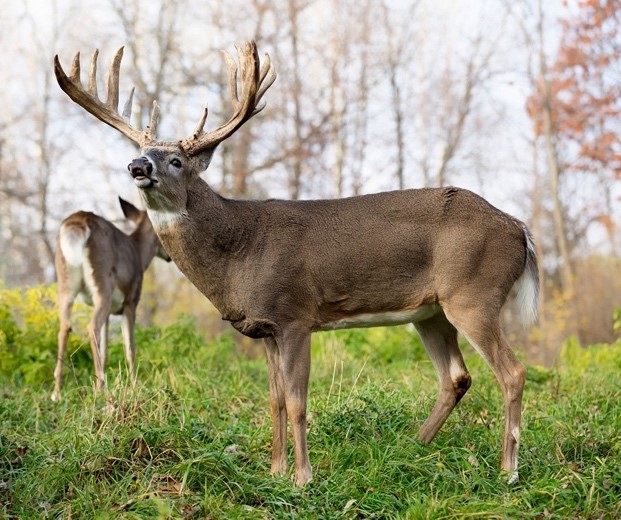Description

Disclaimer: Copyright infringement not intended.
Context
- Research found White-tailed deer in Ohio acting as a reservoir for SARS-CoV2 virus mutations, raising COVID-19 concerns globally.
- Ohio study reveals viral variants in deer evolve three times faster than in humans, published in Nature Communications.
- Bidirectional human-deer transmission highlights zoonotic risks; virus could spread to wildlife and livestock.
Details
- The white-tailed deer (Odocoileus virginianus) is a widely recognized and highly adaptable mammal native to North and South America.
- It's a member of the Cervidae family, which includes other deer species such as moose, elk, and caribou.
Physical Characteristics
- White-tailed deer are medium-sized ungulates with distinctive features.
- They are named after their long, bushy tail, which is brown on top and white underneath.
- When alarmed, they raise their tail, exposing the white underside.
- Coat coloration varies based on location, season, and individual genetics.
- In warmer climates, the coat can be reddish-brown, while in colder regions, it may appear grayish.
- Bucks (males) typically have antlers, which are branched and shed and regrown annually. The antlers grow during the spring and summer and are shed in the winter.
Habitat and Distribution
- White-tailed deer are incredibly adaptable and can be found in a variety of habitats, including forests, grasslands, swamps, and even suburban areas.
- They are native to the Americas, ranging from southern Canada through the United States, Central America, and parts of South America.
Behavior and Ecology
- White-tailed deer are primarily crepuscular, meaning they are most active during the early morning and late afternoon.
- They are herbivores, feeding on a variety of plant material, including leaves, twigs, fruits, and nuts.
- Their feeding behavior significantly influences the ecosystems they inhabit, shaping plant communities and influencing forest regeneration.
Reproduction and Social Structure
- Breeding season, known as the rut, occurs in the fall. During this time, bucks compete for mates using vocalizations, posturing, and sometimes physical combat.
- Fawns are born in the spring, usually as twins. They have a reddish-brown coat with white spots, which help with camouflage.
- White-tailed deer do not form strong social groups like some other deer species. They are generally seen in small family units or as solitary individuals, except during the rut.
Importance and Conservation
- White-tailed deer are of ecological, economic, and cultural significance.
- They are prey for various predators, including wolves, cougars, and coyotes.
- Deer hunting is a popular recreational activity in many parts of their range, providing food and economic revenue.
- However, overpopulation of deer can lead to negative impacts on ecosystems, including overgrazing and destruction of natural vegetation.
Human Interaction
- In some areas, white-tailed deer have become adapted to urban and suburban environments, which can lead to conflicts with humans, such as vehicle collisions and damage to gardens.
- Conservation efforts aim to balance deer populations with their ecological impact while minimizing human-wildlife conflicts.
|
PRACTICE QUESTION
Q. A recent evidence indicates a bidirectional transmission between humans and deer, rather than a one-way flow. This insight emphasizes the need for understanding and surveillance in the realm of zoonoses. Comment. (150 Words)
|

https://www.businesstoday.in/coronavirus/story/white-tailed-deer-in-ohio-found-to-be-reservoir-for-rapid-sars-cov2-mutation-say-scientists-395959-2023-08-28












